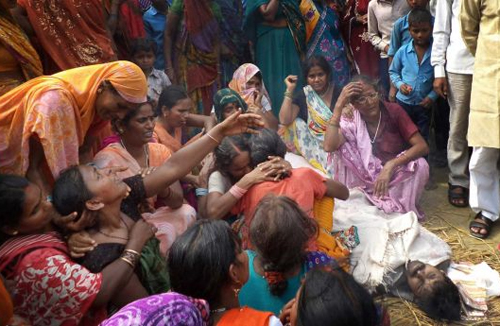
Lucknow, Oct 19: A batch of toxic bootleg liquor killed at least 32 people, mostly poor laborers, and sickened dozens more in northern India, police said Saturday.
Police officer Arvibnd Sen said the victims bought pouches of tainted liquor Thursday from a shop in Adampur village in Uttar Pradesh state.
They started falling sick immediately after drinking the liquor and were taken to local hospitals. Sen said Saturday that 32 people were dead by Friday night.
He said another 50 people were treated in hospitals, and some of them have gone blind because of the toxic brew.
Police arrested the shopkeeper, whose son also died after drinking the tainted liquor, Sen said. He said eight state government officials and four police officers have been suspended as authorities investigate the deaths and possible negligence of duty by the officials in allowing the liquor to be sold.
Adampur is in Azamgarh district, about 300 kilometers (185 miles) southeast of Lucknow, the capital of Uttar Pradesh.
Deaths from drinking illegally brewed alcohol are common in India because the poor cannot afford licensed liquor. Illicit liquor is often spiked with chemicals such as pesticides to increase potency.





Comments
Add new comment